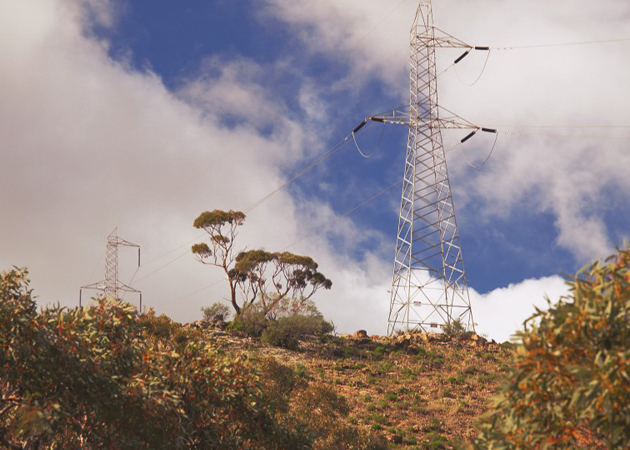Transmission Regulation and Pricing
As the principal Transmission Network Service Provider in South Australia, ElectraNet operates within the National Electricity Market (NEM).
The NEM operates within the framework of the National Electricity Rules, under joint legislation enacted by the participating States and Territories, and is overseen by three main market institutions:
- the Australian Energy Market Commission (AEMC), responsible for rule making and market development
- the Australian Energy Regulator (AER), responsible for economic regulation and rule enforcement
- the Australian Energy Market Operator (AEMO), responsible for market and power system operation.
There is a strong governance structure in place that separates these distinct functions and provides for independent decision-making with clear accountabilities and objectives, together with appropriate checks and balances.

In line with the National Electricity Rules (NER), ElectraNet provides three transmission service categories:
Prescribed Transmission Services
Prescribed transmission services are subject to revenue regulation under the NER. ElectraNet provides these services within our revenue cap. Prescribed transmission services include shared transmission network services to industrial-load customers as well as connection services provided to South Australia’s electricity distributor, SA Power Networks.
Negotiated Transmission Services
Negotiated transmission services are usually provided by ElectraNet to a single or small group of direct-connect customers for substation connection services. These services generally relate to the connection of generation or industrial-load customers and operations and maintenance of third party identified user shared assets and designated network assets. They are negotiated in accordance with the Negotiating Principles for Negotiated Transmission Services in schedule 5.11 of the NER.
Non-Regulated (Contestable) Transmission Services
Non-Regulated transmission services are services that ElectraNet is not obliged to provide and which are able to be provided on a contestable basis by a range of suppliers. These transmission services are not regulated by the NER. ElectraNet’s non-regulated transmission services include operations and maintenance services for privately-owned transmission lines, and connection-related services between ElectraNet substations and customer sites.
Other regulations and schedules that apply to transmission services include:
ElectraNet allocates costs between the three transmission service categories in line with the NER and the AER’s Cost Allocation Guidelines for Transmission Network Service Providers (TNSP).
ElectraNet’s Current Cost Allocation Methodology was approved by the AER on 1 September 2008.
ElectraNet’s prices have been calculated using the proposed Prescribed Transmission Pricing Methodology as approved in the AER’s Final Determination.
ElectraNet determines prescribed transmission service prices to recover the costs of providing regulated services in South Australia. As the coordinating network service provider for the South Australian region, ElectraNet also recovers revenue on behalf of the owners of the MurrayLink interconnector.
Prescribed transmission service prices to network customers are subject to significant volatility from year to year due to settlements residue related receipts, and other issues. We are required to adjust our prices for these factors in subsequent years to eliminate over or under recoveries.
The current Transmission Service Price Schedule for prescribed transmission services applies from 1 July 2023 to 30 June 2024. A new Transmission Service Price Schedule will apply from 1 July 2024 to 30 June 2025.
Transmission Service Price Schedules are required to be published each year by 15 March or the next business day.
In accordance with the National Electricity Rule clause 6A.29 and the AER’s Pricing Methodology Guidelines, ElectraNet is required to publish on its website, by 15 February each year, the modified load export charges (MLEC) payable for the following financial year for use of the South Australian transmission network by adjacent regions.

2024/25 Financial Year
For the 2024/25 financial year, ElectraNet has calculated the MLEC amount payable by the Australian Energy Market Operator (AEMO) – Victoria to ElectraNet.
This charge is calculated in compliance with:
• NER clause 6A.29A
• the AER’s Pricing Methodology Guidelines
• ElectraNet’s 2023 – 2028 Pricing Methodology as approved in the AER’s Final Determination.
The MLEC amount stated below is provided in fulfilment of all relevant regulatory obligations:
Connection point revenue to be recovered from the connection point for 2024/25 financial year – MLEC payable by AEMO-Victoria is $ 22,133,248 (ex GST).
ElectraNet’s Proposed Pricing Methodology, as approved in the AER’s Final Determination, is available from the AER’s website.
As the System Strength Service Provider for the region ElectraNet must publish System Strength Unit Prices at the System Strength Nodes in the region by 15 March.
These prices have been calculated for the period 1 July 2024 to 30 June 2029 with annual indexation.
They are calculated in accordance with ElectraNet’s approved pricing methodology.
For more information on these services and the pricing methodology, please view the following documents:
Ring-fencing compliance
The Australian Energy Regulator’s (AER) Electricity Transmission Ring-fencing Guideline supports the development of competitive markets. It aims to prevent cross-subsidisation and discriminatory behaviour by electricity distribution businesses with their related contestable businesses.
On 1 March 2023, version 4 of the Australian Energy Regulator’s (AER) Electricity Transmission Ring-fencing Guideline (Guideline) came into effect.
The Guideline applies to all Transmission Network Service Providers (TNSPs) and oversees the extent to which TNSPs can provide contestable services.
The objective of ring-fencing is to promote the development of competitive markets. The Guideline aims to prevent cross-subsidisation and discriminatory behaviour by TNSPs with their related contestable businesses.
The documents below outline how we’re complying with the Guideline.

